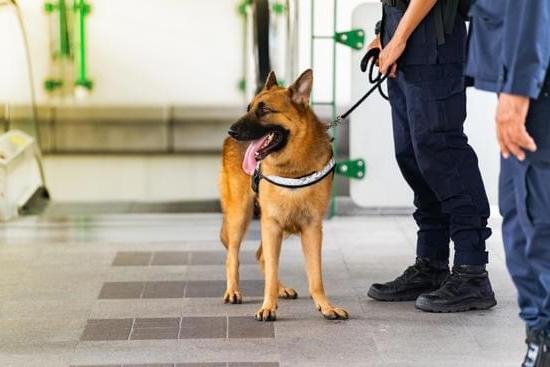When most people think about crate training their dog, they think it’s going to be a long and difficult process. But, in reality, you can crate train your dog in a weekend!
The first step is to get your dog used to the idea of being in a crate. Start by placing the crate in a room where your dog spends a lot of time, such as the living room or kitchen. Put a few treats and toys in the crate, and let your dog explore it on his own.
Once your dog is comfortable going into and out of the crate, start feeding him his meals inside the crate. Start with just a few pieces of kibble and gradually increase the amount over time. This will help your dog associate the crate with positive things, such as food.
The next step is to begin training your dog to go into the crate on cue. Start by saying “crate” while your dog is in the room with you. As soon as your dog goes into the crate, give him a treat and praise him. Continue to do this until your dog automatically goes into the crate when you say “crate.”
Once your dog is reliably going into the crate on cue, you can start using the crate for training purposes. For example, you can use the crate to housebreak your dog or to teach him to stay in his bed when you’re not home.
The bottom line is that you can crate train your dog in a weekend if you take it slow and are consistent with your training. Just be sure to provide your dog with plenty of toys and treats in the crate, so he always looks at it as a positive place.
What Is Crate Training For Dogs
?
Crate training is the process of teaching a dog to willingly enter a crate and stay inside it for extended periods of time. The crate can then be used as a safe place for the dog to rest, eat, and go to the bathroom, without the fear of being punished. Crate training is beneficial for both the dog and the owner, as it can help to prevent destructive behaviors, potty accidents, and separation anxiety.
The first step in crate training is to introduce the dog to the crate. Place the crate in a quiet, comfortable spot in the house and put a soft blanket or towel inside. Next, offer the dog a treat to entice him to enter the crate. Once the dog is inside, praise him and give him another treat. Repeat this process until the dog is comfortable entering and exiting the crate on his own.
The next step is to start training the dog to stay in the crate. Begin by closing the door to the crate and giving the dog a treat. Once the dog is comfortable with this, start leaving the room for a few seconds at a time, and then returning. Gradually increase the amount of time you are away from the dog. Once the dog is comfortable staying in the crate for several minutes, you can start using the crate for short periods of time when you are away from home.
If the dog has a tendency to chew on things when left alone, you can place a few toys in the crate to keep him occupied. Be sure to praise the dog when he plays with the toys so that he knows that they are a positive thing.
If the dog has an accident in the crate, do not punish him. Simply clean up the mess and start again with a fresh, clean crate. Crate training takes time and patience, but it is well worth the effort in the end.
Dog Crate Training Size
One of the most important decisions you will make when crate training your dog is what size crate to purchase. Too large of a crate and your dog will take up most of the space and not feel confined. Too small of a crate and your dog will feel cramped and be unhappy.
The general rule of thumb is to purchase a crate that is one and a half times the size of your dog. This will give your dog enough room to stand up and turn around, but will still be small enough to feel confined.
If you are training a puppy, you will want to purchase a crate that can grow with your puppy. Most crates come with a divider that can be adjusted to make the crate smaller as your puppy grows.
When selecting a crate, it is also important to consider the type of material the crate is made out of. Plastic crates are durable and easy to clean, but can be a little noisy. Wire crates are lightweight and allow your dog to see his surroundings, but can be difficult to clean.
The bottom line is that there is no perfect crate, so it is important to select the one that best meets the needs of you and your dog.
How To Crate Train A Dog Fast
So, you’ve decided you want to crate train your dog. Great! Crate training can be a very effective way to train your dog and help him or her learn good habits. It can also be a lifesaver when you need to leave your dog alone for a while. But how do you go about crate training your dog fast?
The first step is to get your dog used to the idea of being in the crate. Start by putting the crate in a room where your dog spends a lot of time, such as the living room or bedroom. Put some of your dog’s toys and food inside the crate, and let your dog explore it. Don’t force your dog to go into the crate, but let him or her go in and out on their own. After a while, start closing the door to the crate for a few minutes at a time. gradually increase the amount of time the door is closed.
Once your dog is comfortable going into the crate and staying in it for a few minutes, you can start using the crate as a training tool. Put your dog in the crate and give him or her a command, such as “sit” or “stay.” If your dog doesn’t obey the command, he or she will be punished by being left in the crate for a few minutes. If your dog does obey the command, he or she will be rewarded with a treat or some playtime.
Crate training your dog can be a fast and effective way to train them to obey commands and learn good habits. It can also be a lifesaver when you need to leave your dog alone for a while.
Crate Training An Older Rescue Dog
If you are considering crate training your older rescue dog, you are on the right track. Crate training can be an extremely effective way to housetrain your dog and can also help to reduce problem behaviors such as chewing and scratching.
The key to successful crate training is to make sure that your dog sees the crate as a positive place. Start by putting a few treats in the crate and then letting your dog go in and out of the crate on his own. Once your dog is comfortable going in and out of the crate, you can start to close the door for short periods of time.
If your dog starts to whine or bark in the crate, don’t let him out until he has stopped. This will help to teach him that it is not acceptable to vocalize in the crate. Be sure to praise your dog when he is quiet in the crate.
It may take a little bit of time, but with patience and consistency, you can crate train your older rescue dog to become a well-behaved member of the family.

Welcome to the blog! I am a professional dog trainer and have been working with dogs for many years. In this blog, I will be discussing various topics related to dog training, including tips, tricks, and advice. I hope you find this information helpful and informative. Thanks for reading!





